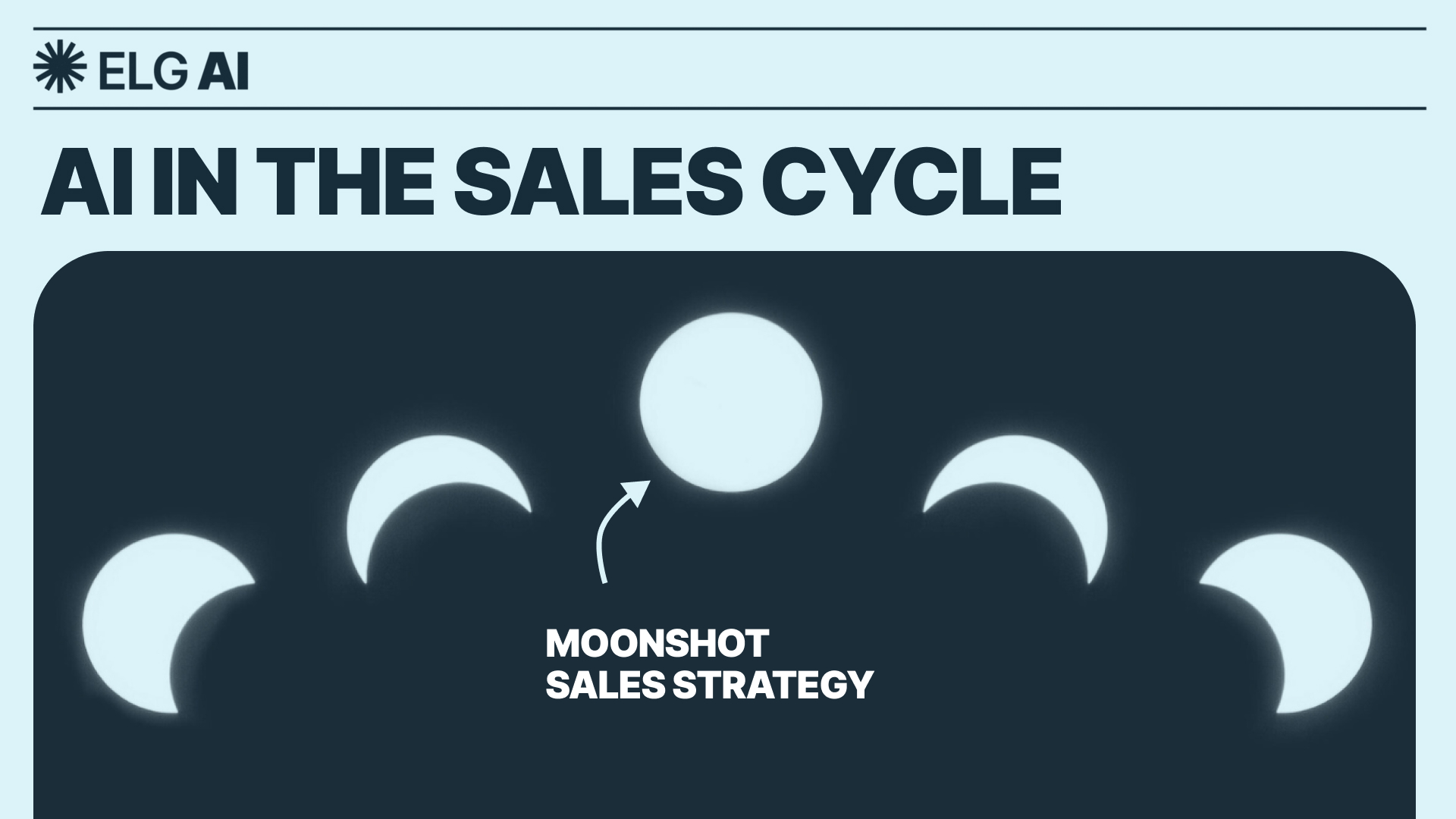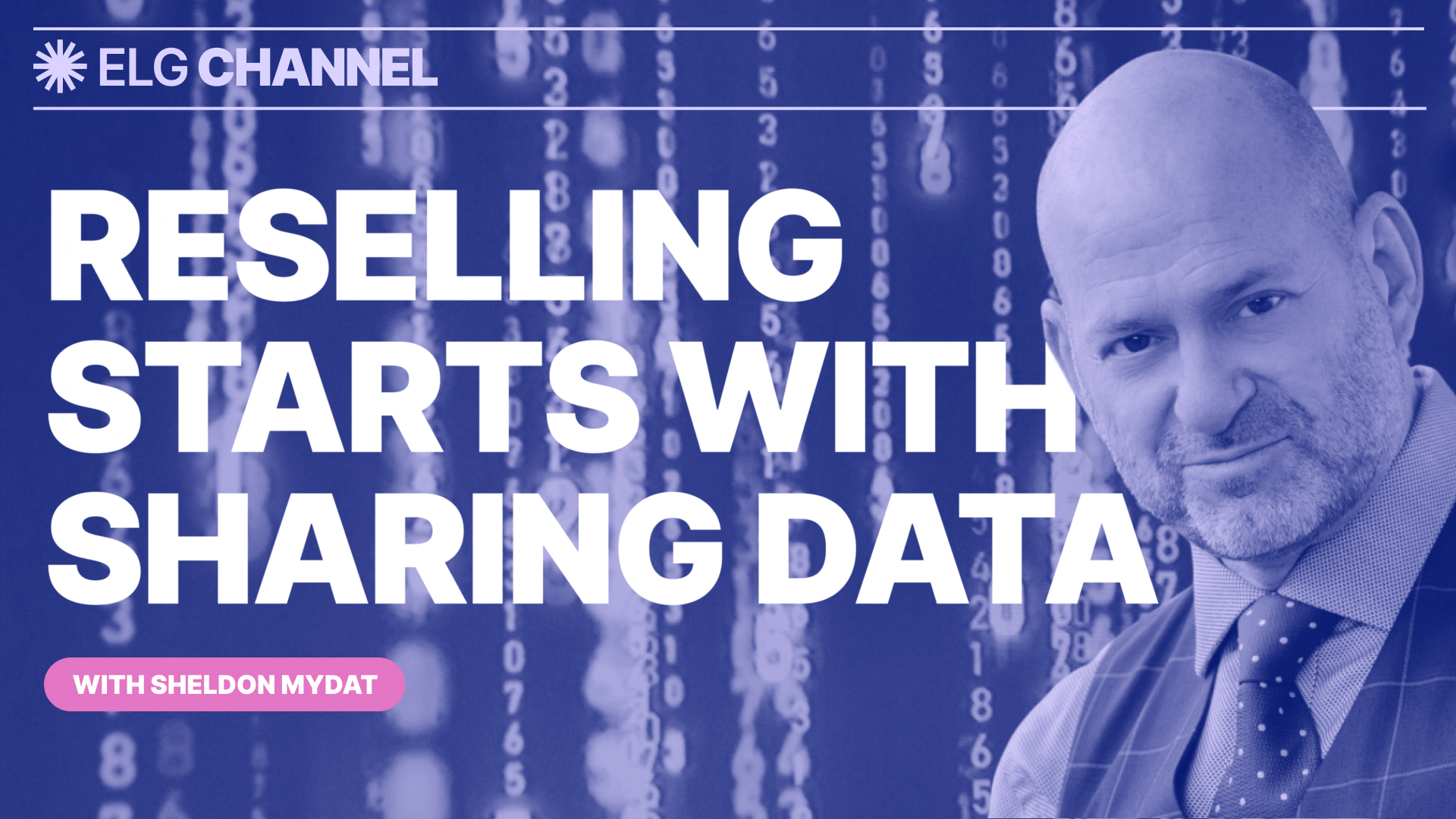Subscribe for Access
How to empower your sales team to swap intel with partners to accelerate sales cycles, increase deal sizes, and expand existing accounts.

Your sales rep is trying to break into an account, but they’ve encountered some roadblocks:
- Their point of contact at the account no longer works at the company
- They have little visibility into who would be using their product, who has the buying power, and what their buying process and timeline is like
- They’re unsure of their prospect’s business priorities and how to best tailor their pitch
But your sales rep can get all of this intel and more in just minutes — with a little help from their friends partners (™ The Beatles… and Joe Cocker). Your partners who already have existing relationships with your sales team’s prospects can help them skip ahead in the sales conversation and close the deal (or expand an existing account).

Below, we’re sharing all of our best resources for helping your sales reps swap intel with your partner’s sales reps. What to expect:
- Your partner has an existing relationship with your prospect — now what?
- The questions your sales reps should ask your partner’s sales reps
- What your sales reps should share with your partner’s sales reps
Your partner has an existing relationship with your prospect — now what?
You’ve identified which of your prospects overlap with your partner’s customers. If you’re using Crossbeam, you know exactly which partners can help your sales reps move the needle on their accounts in real time, and your sales reps can view the data directly in Salesforce using the Crossbeam Salesforce Widget.
Let’s quickly review how you and your sales rep will uncover the data:
The account mapping matrix below shows a high number of prospects overlapping with your partner’s customers.

The number of overlapping prospects with your partner’s customers represents how many prospects your partner could help your sales rep with — whether through sharing intel about the account or providing a warm intro.

In Crossbeam, you can:
- Ask partners for intel about an account. Your ask will appear for you and your partner in Slack if you’ve connected the Crossbeam Slack App.
- Generate a Report to bring to your weekly sales meetings. From there, you can identify which accounts to focus on with your sales reps and then bring in the right partners.
- Collaborate with your partners using Shared Lists.
Your sales reps can also see which partners can help with each of their accounts directly in their account dashboards in Salesforce, using the Crossbeam Salesforce Widget. You can control the data your sales team sees in the widget using your permission settings in the Salesforce App.

If you prefer that a member of your partnerships team liaise with your partners and their sales reps… your sales rep can ask your partnerships team for help immediately or during your next sales huddle. You can also adjust the controls directly in Sales Edge so that your partner account manager (PAM) is the first point of contact when a new overlap with your partner surfaces.
The questions your sales reps should ask your partner’s sales reps
Your sales rep and your partner’s sales rep hop on the phone. They spend a few minutes talking about the latest season of The Bear — Great! They’re already getting to know each other and building trust.
The partnerships team at Aircall suggests spending the first five to ten minutes of a 15-minute call on small talk. Aircall uses this call breakdown to build authentic relationships with their partner’s sales reps and learn about their partner’s sales team. Your sales reps can apply the same idea to their calls with your partner’s sales reps.

Your sales reps should go into their co-selling syncs with your partner’s sales reps ready to ask them questions about relevant accounts and also ready to provide support to your partner’s sales rep. We’ve heard time and time again about how providing value to your partner’s sales team without asking for anything in return helps your partner’s team think of you and your solution first when new opportunities arise.
If your sales rep is looking to break into a new account… Below are five questions your sales rep can ask your partner’s sales rep:
Question #1: Who’s your champion at the account?
Your sales rep can understand who they should be speaking with at the prospect account. If they don’t have a champion yet, this is a great opportunity for them to skip ahead in their outreach to engage the right stakeholder or to ask for a warm intro. However, your sales rep should ensure that it’s the right time for an intro — Asking for too many intros at the wrong time can sour your relationship with your partner and cost you the deal. The next questions can help your sales rep understand if it’s the right time to engage the prospect or not.
Question #2: Do you think your customer is at the right stage to adopt our joint solution/integration?
Your partner’s account executives (AEs) or customer success managers (CSMs) have valuable intel about how your prospects are using their products. It’s possible your product can help their customer achieve their current goals or their future goals. Additionally, they might have insight into their customer’s budget and when they’re looking to expand or modernize their tech stack. Engaging your prospect at the right time will save your sales rep time and help them close the deal.
For some companies, the right time to sell their joint solution and/or integration is right when their prospect becomes a customer of their partner. We refer to the act of engaging a prospect immediately after they become your partner’s customer as the “fast follow”.
Question #3: Could you tell me about the buying process/timeline?
This question will help your sales rep understand who needs to be involved in the procurement process — including practitioners, stakeholders with buying power, legal and security teams, and more. This intel can help them gauge how long the sales cycle will be, understand when the best times are to check in with the prospect, and know what to proactively include in their pitch decks and email correspondence.
Question #4: What’s your customer’s most pressing pain point right now?
Knowing your prospect’s pain points can help your sales reps tailor their email outreach and pitch decks in a way that shows the value of your product for the prospect’s existing needs.
Question #5: What are some of the tools your customer is using right now?
Tech stack insights are gold. Your sales development representatives (SDRs) can mention relevant integrations in their outreach, and your AEs and solutions engineers (SEs) can speak to the integrations relevant to your customers during the sales conversation.
Note: You can also uncover tech stack insights about your prospects by observing which of your other partners have your prospect as a customer. The onboarding team at RollWorks uses Crossbeam to learn about their new customers’ tech stacks and encourage adoption of relevant integrations — Your sales team can do the same to talk about relevant integrations during the sales conversation. The more integrations (or the right integrations) your sales rep makes your prospect aware of could help accelerate the sales conversation and increase the deal size.
Get 15+ questions on how your sales reps can master their co-selling syncs, and catch the webinar, “The 15+ questions that accelerate co-selling”, where Crossbeam’s VP of Content Sean Blanda talks through these questions and the context around them.

If your sales rep is looking to expand an existing account… Below are five questions your sales rep can ask your partner’s sales rep:
Question #1: Who else are they considering in our category?
Your agency partners in particular may have insight into which tools your existing accounts are considering switching to and why. Knowing what they like about your competitor’s product can help your sales rep game plan and understand which points to focus on when it comes to renewals or expanding an existing account.
Question #2: How can we tailor our joint solution pitch to meet the customer’s priorities? Which of your features should we focus on?
Some integrations can lead to an upsell or expansion. If an integration with your partner’s product can help you expand your product usage to another department (e.g. expanding from the sale team using your product to the marketing team using it, too) or to another one of your customer’s global offices, your AE will want to tailor their pitch to speak to the added value.
Question #3: Who else do you have relationships with at the account?
Similar to Question #2, your partner’s sales reps can help your sales reps expand their accounts to additional global branches of an existing customer. For example: Your customer might have Amazon Web Services Sao Paolo as a customer, and you have AWS Frankfurt. Expanding your product to multiple global branches at your largest accounts would significantly impact your company’s annual recurring revenue (ARR).
Question #4: How did you approach your expansion conversation with the customer?
If your partner’s sales rep has already expanded their customer’s account (or led an expansion with a similar customer), they can share what’s worked well and contributed to the success of the expansion. Your sales reps should also ask this question internally to their colleagues who have expanded similar accounts.
Question #5: Which of your colleagues should I also connect with?
Your partner’s sales rep may have other colleagues who can help your sales rep. Some of your partners’ sales reps may sell vertically, while others may sell regionally. This means your sales rep’s prospects or existing accounts could overlap with any number of your partner’s sales reps. Your partner’s sales rep can help point your sales rep in the right direction and connect them with a helpful colleague.
What your sales reps should share with your partner’s sales reps
Deciding whether or not to connect your sales reps directly with your partner’s sales reps depends on the maturity of your partnership and the trust you have with your internal and external stakeholders.
An example: At Aircall, their PAMs served as liaisons between their sales reps and their strategic partner’s sales reps. Their PAMs would lead the calls with their partner’s sales reps, and their internal sales reps would join the call to ask relevant questions and initiate next steps. They refer to this structure as a “star” network with their PAMs sitting at the center of all of their partner activities.
Fast forward many months later, and now their sales reps have established relationships with their strategic partners’ sales reps and are confident leading their co-selling syncs without their PAMs support. Aircall has begun moving to a “mesh” network where each internal stakeholder (from their leadership team to their individual contributors) have a direct connection to their partner counterparts. This took years of an investment in this particular strategic partnership, and as a result, they now have a global taskforce spearheading initiatives to grow the partnership with the help of all of their go-to-market (GTM) teams.
Each tech partnership is different, and when and how you engage your sales reps with your partner depends on your relationships with each stakeholder and your customer success stories using your integration or joint solution. For a guide on when to engage each member of your sales team (from your AEs to your SDRs), check out No Opportunities Lost: The Crossbeam Guide to Co-Selling.

The 5 Phases of Co-Selling, from the “No Opportunities Lost: The Crossbeam Guide to Co-Selling” e-book.
If you are using Crossbeam to map accounts, rest assured that we uphold the highest commitment to data privacy and security controls. The only data required to begin mapping accounts is the account name. You can sync your customer relationship management (CRM) system, like Salesforce, directly to Crossbeam and then choose whether you’d like to share overlap data and/or account-level data with each individual partner. Many customers choose to sync personal identifiable information (PII), knowing that their data is protected.
Need more convincing? Crossbeam received its ISO/IEC 27001 and 27701 Certifications and has published all documentation on the Crossbeam Security Portal so you can easily share everything you need with your legal and security teams.
Beyond account mapping, what your sales team shares with your partner may depend on a variety of factors. Below are a few tips for guiding your sales team on what to share when they speak with your partner’s sales team:
Using their networks to accelerate sales isn’t unfamiliar to your sales reps. Prior to entering the wonderful world of Ecosystem-Led Sales, your sales reps needed to be thoughtful about asking for and sharing information to help close deals with their network. Speak with them about their process, and empower them to adapt their methodology to embrace Ecosystem-Led Sales.
Sit in on some of your sales team’s calls to help guide the conversation. Then, let them take over their co-selling syncs when you feel comfortable handing over the reigns.
Use our 15+ co-selling questions as a guide for what information your sales reps might share with a partner, and empower them to approach the conversation thoughtfully — the same way you as a partnership leader would navigate growing your relationship with a partner.
The Sales Edge Co-Selling Templates below include standard context prompts that serve as a good starting point for your sales reps who are looking for intel from your partner.
Co-selling templates in the Crossbeam Sales Edge dashboard
You can add standard context prompts to guide your sales rep in what to share when asking a partner for help. What you include in your Co-Selling Templates can also serve as a conversation starter with your sales reps to discuss what intel they should and shouldn’t share with your partner’s sales reps to help them with their prospect accounts.
You can find the Co-Selling Templates in your Crossbeam Sales Edge dashboard.
In our recent webinar with Impartner, Chris Friedel, Senior Manager of Technology Partnerships at Crossbeam, speaks about the value of using Sales Edge to put partner data in the tools your sales teams live in every day and make it easy for them to co-sell at scale. He also shares how we observed a significant increase in sales activities for Crossbeam customers when they connected Sales Edge to Slack.
✨ Check out 21:55 in the webinar, “MasterClass EP8: Unleashing Partner Ecosystem Potential”.

–
Want to learn more about Ecosystem-Led Sales? Subscribe to the Crossbeam Insider newsletter below. 👇
Plus, in mid-July, we’ll be publishing all of our best articles, webinars, ebooks, and more in one place through our new center for Ecosystem-Led Growth insights, Crossbeam Insider. Check out a preview of what to expect here, and subscribe below to get access as soon as the new Crossbeam Insider is live.






%20(1).jpg)






.png)




























.jpg)




.png)






.jpg)





.jpg)

.webp)


















.webp)














